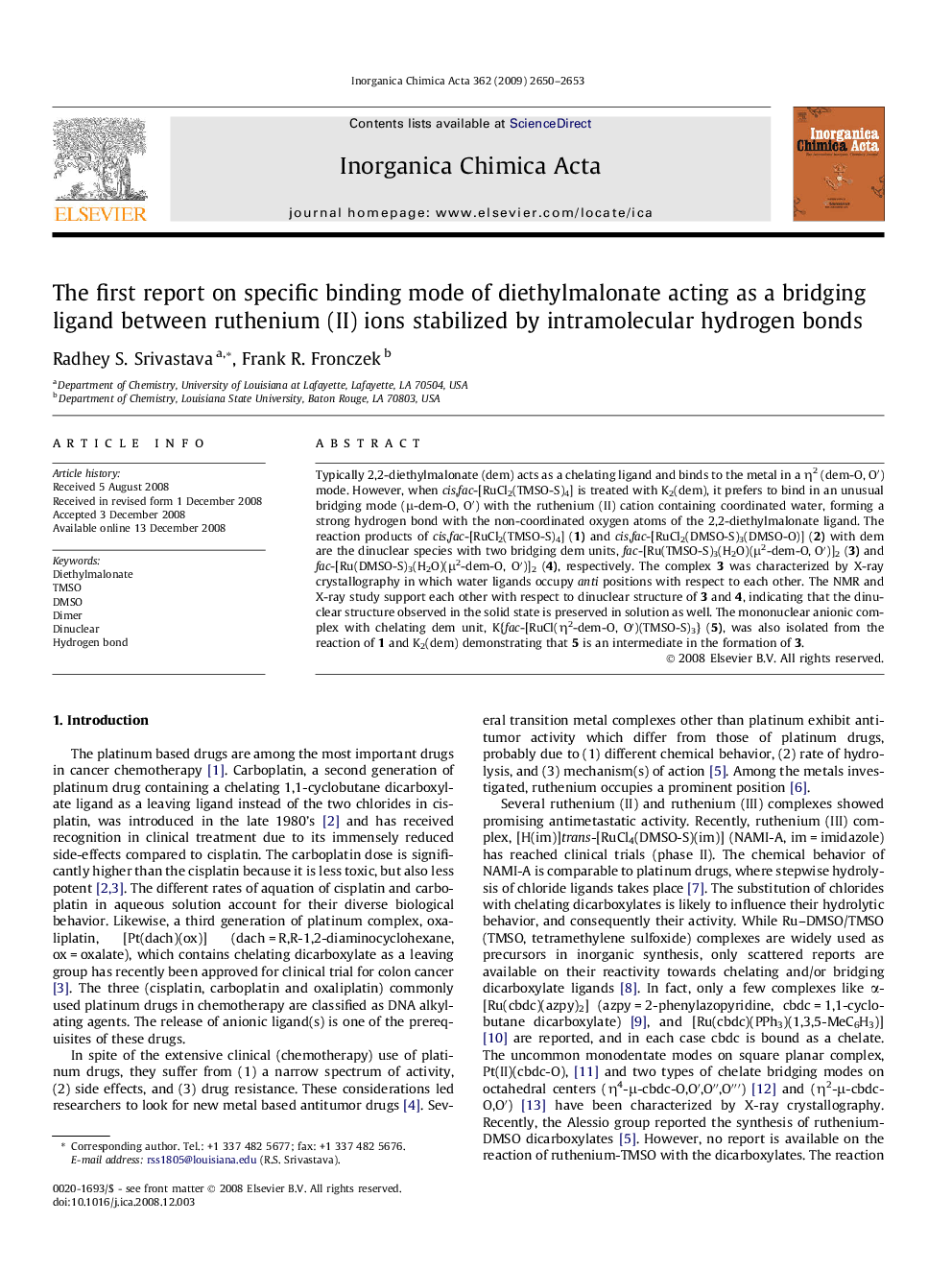| کد مقاله | کد نشریه | سال انتشار | مقاله انگلیسی | نسخه تمام متن |
|---|---|---|---|---|
| 1308725 | 975180 | 2009 | 4 صفحه PDF | دانلود رایگان |

Typically 2,2-diethylmalonate (dem) acts as a chelating ligand and binds to the metal in a η2 (dem-O, O′) mode. However, when cis,fac-[RuCl2(TMSO-S)4] is treated with K2(dem), it prefers to bind in an unusual bridging mode (μ-dem-O, O′) with the ruthenium (II) cation containing coordinated water, forming a strong hydrogen bond with the non-coordinated oxygen atoms of the 2,2-diethylmalonate ligand. The reaction products of cis,fac-[RuCl2(TMSO-S)4] (1) and cis,fac-[RuCl2(DMSO-S)3(DMSO-O)] (2) with dem are the dinuclear species with two bridging dem units, fac-[Ru(TMSO-S)3(H2O)(μ2-dem-O, O′)]2 (3) and fac-[Ru(DMSO-S)3(H2O)(μ2-dem-O, O′)]2 (4), respectively. The complex 3 was characterized by X-ray crystallography in which water ligands occupy anti positions with respect to each other. The NMR and X-ray study support each other with respect to dinuclear structure of 3 and 4, indicating that the dinuclear structure observed in the solid state is preserved in solution as well. The mononuclear anionic complex with chelating dem unit, K{fac-[RuCl(η2-dem-O, O′)(TMSO-S)3} (5), was also isolated from the reaction of 1 and K2(dem) demonstrating that 5 is an intermediate in the formation of 3.
The reaction products between cis,fac-[RuCl2(TMSO-S)4] (1) and cis,fac-[RuCl2(DMSO-S)3(DMSO-O)] (2) with dem (dem = 2,2-diethylmalonate) are fac-[Ru(TMSO-S)3(H2O)(μ2-dem-O, O′)]2 (3) and fac-[Ru(DMSO-S)3(H2O)(μ2-dem-O, O′)]2 (4), respectively. The complex 3 was characterized by X-ray crystallography in which ancillary water ligands occupy anti positions with respect to each other. The NMR and X-ray study complement to each other with respect to dinuclear structure of 3. The mononuclear anionic complex with chelating dem unit, K{fac-[RuCl(η2-dem-O, O′)(TMSO-S)3]} (5), was also isolated from the reaction of 1 and K2(dem) demonstrating that 5 is an intermediate in the formation of 3.Figure optionsDownload as PowerPoint slide
Journal: Inorganica Chimica Acta - Volume 362, Issue 8, 1 June 2009, Pages 2650–2653